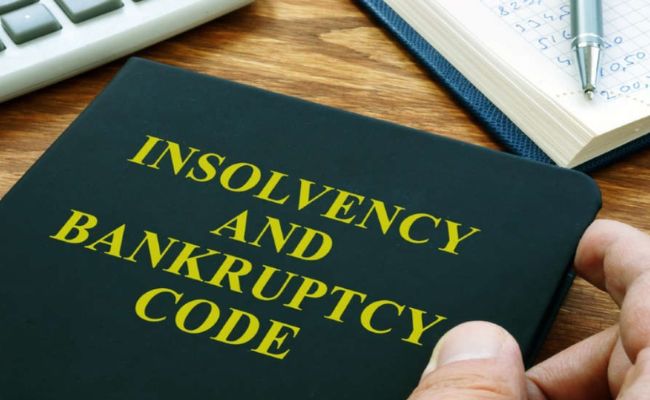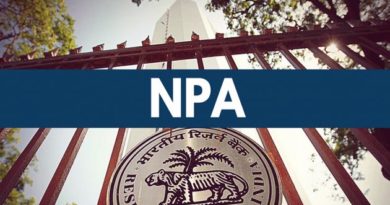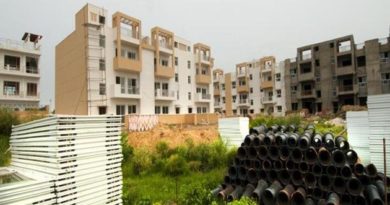The Role and Impact of the Insolvency and Bankruptcy Code (IBC) in NPA Recovery
Abstract: Indian banks, especially grappling with the mounting challenge of Non-Performing Assets (NPAs) within Scheduled Commercial Banks (SCBs), are experiencing a significant downturn in their capacity for credit recycling, resulting in reduced business opportunities and declining profits. However, various factors contributing to the severity of NPA problem are including macro-economic, political, and internal factors, emphasizing the complexity of the issue. With this background, the present study puts an effort to look at the role of the Insolvency and Bankruptcy Code (IBC) in NPA recovery and also showcasing its significance in resolving insolvency and maximizing creditor recovery.
Introduction: The vitality of a country’s economy lies at the core of its growth and prosperity, with various factors contributing to its development. Among these factors, the banking sector emerges as a pivotal force, facilitating the expansion and stability of the national economy. Through the efficient allocation of savings into productive ventures, the banking system assumes a vital function in nurturing economic growth and development. In India, the banking structure comprises commercial banks and co-operative banks, each playing distinct yet complementary roles in the financial ecosystem. Commercial banks, further categorized as scheduled and non-scheduled, encompass private, public, branches of foreign banks and regional rural banks, collectively providing to the diverse financial needs of the populace.
Central to the functions of these banks is the mobilization of deposits and the provision of loans, pivotal for stimulating economic activity. While deposit-taking carries minimal risk, as banks are obligated to refund public funds upon request, lending involves inherent risks, with the possibility of borrowers defaulting on repayments, leading to the accumulation of non-performing assets (NPAs). NPAs, characterized by assets failing to generate revenue for the bank, primarily consist of loans or advances in default or arrears. Default occurs when borrowers fail to meet their contractual obligations, jeopardizing the financial health and profitability of banks. As such, the management and mitigation of NPAs are critical for ensuring the stability and sustainability of the banking sector, thereby bolstering the broader economic landscape.
Scheduled Commercial Banks and Severity of NPA Problem – A Brief Analysis
Despite commendable improvement in the provision of banking services, reach and performance, the banking companies in India are struggling hard with their continuously growing amount or alarming rate of non-performing assets (NPAs) i.e., the amount of loan given by the banks and on which, the borrowers have failed to make the scheduled payments to the banks – interest payments and/or principal repayments. This requires the lender-bankers to aside adequate money for meeting possible future loss on these loans. And the money so set aside for covering potential loss of loan is termed as loan loss provision and this is a charge to the statement and loss affecting the profit and profitability of banking companies adversely. Besides, it also affects other aspects of banking business and performance like credit recycling, interest income and net interest income.
This NPA problem assumes greater importance/proportion as the amount of NPAs is increasing continuously year after year. However, a few operational statistics presented below (Table- 1) and followed by an analysis for providing greater insight into the magnitude of NPA problem.
Table – 1: Gross NPAs and Gross NPA Ratio of SCBs
| Year-end, 31 March | Gross NPAs
(Amount in ₹ Crores) |
Gross NPA Ratio (%) |
| 2005 | 58,700.00 | 4.94 |
| 2006 | 51,200.00 | 3.30 |
| 2007 | 50,500.00 | 2.51 |
| 2008 | 56,500.00 | 2.25 |
| 2009 | 69,300.00 | 2.28 |
| 2010 | 84,700.00 | 2.39 |
| 2011 | 97,900.00 | 2.25 |
| 2012 | 1,42,000.00 | 2.75 |
| 2013 | 1,93,200.00 | 3.23 |
| 2014 | 2,63,021.24 | 3.82 |
| 2015 | 3,22,925.80 | 4.27 |
| 2016 | 6,11,609.46 | 7.48 |
| 2017 | 7,90,268.00 | 9.32 |
| 2018 | 1,036,187.00 | 11.18 |
| 2019 | 9,33,608.85 | 9.08 |
| 2020 | 8,96,082.46 | 8.21 |
| 2021 | 8,35,051.42 | 7.33 |
| 2022 | 7,42,397.17 | 5.82 |
| 2023 | 5,71,850.34 | 3.87 |
| Descriptive Statistics and CAGR |
|
|
| Mean | 410894.83 | |
| Standard Deviation | 363532.45 | |
| CV (%) | 88.47 | |
| Skewness | 0.47 | |
| CAGR (%) | 12.73 | |
Note: CV stands for Coefficient of Variation, while CAGR represents Compound Annual Growth Rate.
Source: Operational Statistics Collected and Tabulated based on the data retrieved from (RBI), Report on Trend and Progress of Banking in India, 2022-23, Mumbai, and the calculations made based on these details.
It is evident of the table that the amount of Gross Non-Performing Assets (NPAs) and the Gross NPA Ratio of Scheduled Commercial Banks (SCBs) over a period of years from 2005 to 2023 (19 years). However, the amount of GNPAs have shown a general increasing trend over the years, with fluctuations and significant spikes in certain years. There is a noticeable acceleration in the growth of NPAs starting from around 2015 until 2018, with a peak in 2018. After 2018, there’s a decline in the absolute value of NPAs, indicating some level of recovery or better management.
Even the Gross NPA Ratio, which measures the proportion of NPAs to total assets, also shows an increasing trend over the years. There’s a more pronounced increase in the ratio from 2015 to 2018, reflecting a worsening asset quality situation during that period. Subsequently, there’s a decline in the ratio from 2018 onwards, indicating a relative improvement in asset quality.
Moving forward, the mean Gross NPAs over the period is ₹410,894.83 crores, indicating the average level of NPAs. The standard deviation of ₹363,532.45 crores suggests significant variability in NPAs across the years. The coefficient of variation (CV) of 88.47% indicates a high degree of variability relative to the mean. The skewness of 0.47 suggests a slight right-skewness in the distribution, indicating that there are more years with lower NPAs than higher NPAs. The Compound Annual Growth Rate (CAGR) of 12.73% indicates the annualized rate at which NPAs have been growing over the period.
In the lines of above, the increasing trend in NPAs and NPA ratio till around 2018 reflects challenges in asset quality management within the banking sector. The decline in NPAs and NPA ratio post-2018 suggests efforts by banks to address NPAs, possibly through resolution mechanisms like asset reconstruction, NPA recovery initiatives, or stricter lending practices. The high variability and skewness in NPAs indicate the impact of economic cycles, regulatory changes, and bank-specific factors on asset quality. The CAGR indicates the pace at which NPAs have been growing annually, emphasizing the need for continuous monitoring and proactive measures by banks and regulators to manage asset quality risks effectively.
Factors Responsible for increasing rate/level of NPAs
As already mentioned, numerous factors contribute to the concerning magnitude and rate of NPAs in Scheduled Commercial Banks (SCBs). These causes differ considerably among banks, borrowers, and even loan purposes. The range of these factors emphasizes the intricate nature of the NPA challenge, highlighting the need for a nuanced approach customized to tackle distinct issues within the context of each bank and borrower. The macro-economic factors significantly contribute to the surge in non-performing assets (NPAs). Economic slowdowns, fluctuating interest rates, and inflationary pressures strain borrowers’ ability to repay loans. Additionally, currency depreciation and global economic instability impact industries reliant on exports, further straining loan repayment capacities. Structural reforms, like the introduction of Goods and Services Tax (GST), and regulatory changes can also disrupt businesses, leading to NPAs. Moreover, sector-specific issues, such as problems in the infrastructure and power sectors, exacerbate the NPA crisis. Understanding and addressing these macro-economic factors are critical to tackling the NPA problem effectively.
Besides, political interference in lending decisions, favoritism towards certain industries or borrowers, and delays in policy implementation contribute to the NPA crisis. Additionally, weak governance and corruption enable willful defaulters to manipulate the system, siphoning funds and avoiding loan repayments. These defaulters exploit loopholes in regulations and engage in fraudulent activities, exacerbating NPAs. Addressing political interference and tightening regulations to prevent willful defaulters are crucial steps to mitigate the NPA problem and restore financial stability in Indian banks.
In addition, even the internal factors significantly contribute to the rise in NPAs. Weak credit risk management practices, including inadequate due diligence in loan appraisal and monitoring, lead to increased default rates. Inefficient recovery mechanisms and delays in resolving NPAs further exacerbate the problem. Additionally, corporate governance issues, such as board oversight and risk management practices, play a role in the accumulation of NPAs. Strengthening internal controls, enhancing risk management frameworks, and improving governance structures are essential to mitigate NPAs and restore financial health in Indian banks.
Role and Impact of IBC in NPA Recovery
Before the enactment of the Insolvency and Bankruptcy Code (IBC), India relied on a patchwork of statutes to address debt recovery. The SARFAESI Act of 2002 and the RDDBFI Act of 1993 empowered banks to pursue legal action against defaulters. Additionally, the SICA of 1985 and winding up provisions of the Companies Act of 1956 allowed creditors and debtors to seek resolution for insolvency collectively. The Tiwari Committee’s recommendations in 1981 led to the creation of SICA and bodies like BIFR and AAIFR, which were dissolved in 2016.
Under the IBC, cases pending before BIFR and AAIFR are transferred to the NCLT, and cases before DRT or winding up proceedings under the Companies Act of 2013 are eligible for initiation under the IBC. Financial and operational creditors, including non-banks, can initiate insolvency proceedings under Section 6 of the IBC. A 330-day resolution timeline is set, compelling even non-bank creditors to seek redressal through NCLT.
Upon acceptance of an Insolvency Resolution Plan (IRP), a moratorium period begins, staying all ongoing legal proceedings against the corporate debtor. A Committee of Creditors (COC) is formed, representing financial creditors, which must vote with a 66% majority to approve the resolution plan. Failure to reach an agreement within 180 days results in liquidation, halting all other recovery processes. Thus, the IBC provides a comprehensive framework for resolving insolvency, streamlining the process and maximizing recovery for creditors.
During the financial year 2022-23, among the various avenues banks employ to address their stressed assets, debt recovery tribunals (DRTs) experienced the most significant surge in both the number of cases referred and the monetary value involved. On the other hand, cases referred under the Securitisation and Reconstruction of Financial Assets and Enforcement of Security Interest (SARFAESI) Act saw a contraction in both referred cases and monetary involvement, following a notable uptick in the preceding year. Meanwhile, the Insolvency and Bankruptcy Code (IBC) maintained its position as the primary avenue for recovery, contributing 43% to the total amount recovered in 2022-23, with an accompanying improvement in the recovery rate.
In addition to utilizing various resolution mechanisms for recovery, banks also opt to cleanse their balance sheets by offloading non-performing assets (NPAs) to asset reconstruction companies (ARCs). The volume of NPAs sold to ARCs escalated notably in 2022-23, partly attributed to assets offloaded to the newly established National Assets Reconstruction Company Ltd (NARCL). During this period, 9.7% of the previous year’s stock of Scheduled Commercial Banks’ (SCBs) Gross NPAs (GNPAs) were sold to ARCs, a substantial increase from the 3.2% recorded in 2021-22. Besides, the acquisition cost of ARCs, relative to the book values of assets, decreased from 33% at the close of March 2022 to 29.8% by March 2023.
The share of Security Receipts (SRs) subscribed by banks and Financial Institutions (FIs) witnessed a steady decline from 65.4% at the end of March 2021 to 60.6% by the end of March 2023. Moreover, the amount of completely redeemed SRs, indicating recovery through this avenue, further escalated during the financial year.
Concluding Remarks: The banking sector stands as a cornerstone of economic growth, playing a vital role in channeling savings into productive investments and stimulating economic activity. However, the persistent challenge of Non-Performing Assets (NPAs) emphasizes the need for effective management and mitigation strategies. While the increasing trend in NPAs until 2018 posed significant challenges, subsequent declines suggest efforts towards better management and resolution. The implementation of mechanisms like the Insolvency and Bankruptcy Code (IBC) has been instrumental in streamlining recovery processes. Moving forward, continued vigilance, proactive measures, and collaborative efforts are essential to ensure the stability and sustainability of the banking sector, thus bolstering the broader economic landscape. Top of Form
References
- Reserve Bank of India, Report on Trend and Progress of Banking in India, 2022-23, Mumbai.
- Tiwari, A. (2022). Insolvency & Bankruptcy Code: A Major Mode Of NPA Recovery.
- Bakshi, A., & Mitra, S. (2020). ROLE OF IBC IN NPA RESOLUTION IN INDIA. Prestige International Journal of Management and Research, 11(3), 106-112.
Declaration
I confirm that I have not submitted this article for publication elsewhere. It is important to note that the opinions expressed in this article may not necessarily align with those of the Institute or the Journal Editor.




